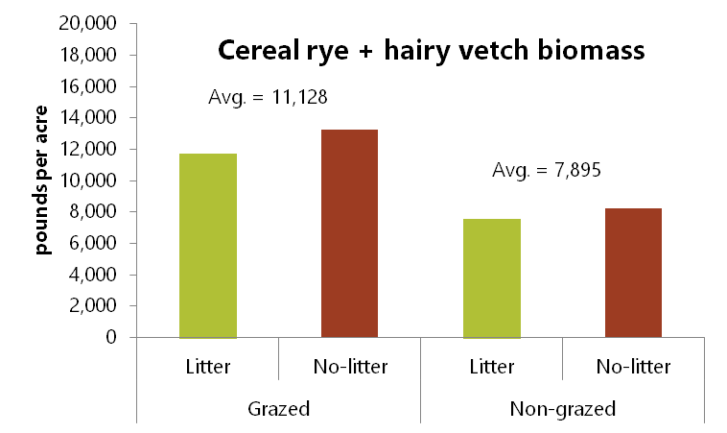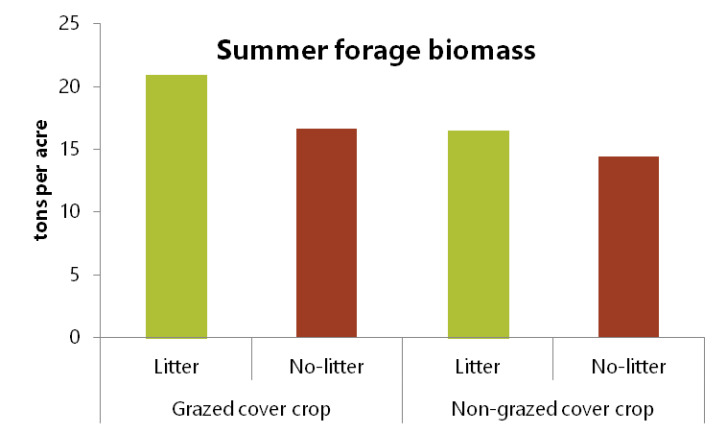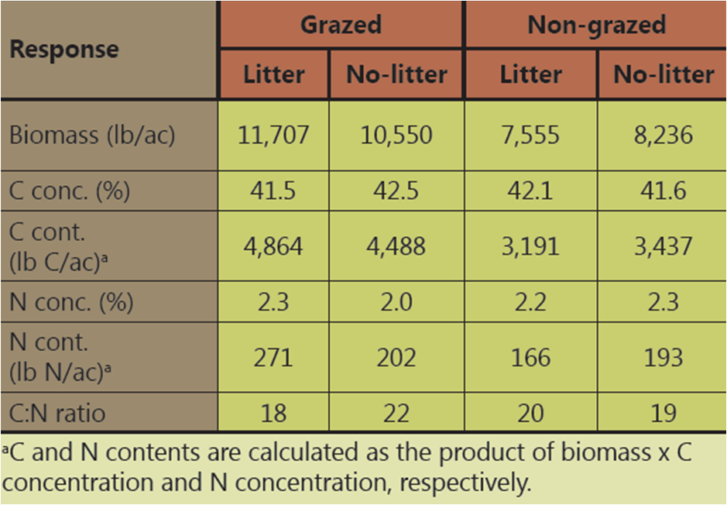RESEARCH REPORT: Summer Annual Forage Established After Cereal Rye + Hairy Vetch Cover Crop
Cover crops may not be just for corn and soybeans. Cover crops and summer annual forage mixes can provide a host of benefits to annual cropping systems: add biodiversity, reduce soil erosion, reduce nutrient loss, increase soil organic matter and reduce weed pressure. Dave and Meg Schmidt, who raise cattle and crops near Exira in Audubon County in western Iowa, devised a trial to evaluate the effects of applying chicken litter to a cereal rye + hairy vetch cover crop and grazing the cover crop ahead of establishing a summer annual forage mix (sorghum-sudangrass, pearl millet, corn, Japanese millet, collards, rapeseed, sunflowers, mung beans, cowpeas). The cereal rye + hairy vetch mix was seeded in August 2015; the chicken litter applied in September 2015; cover crop was grazed in March 2016; summer annual forage was seeded in early June 2016.
This trial sought to answer two questions: 1) Should chicken litter be applied to a cereal rye + hairy vetch cover crop to maximize cover crop biomass and N supply for a summer annual forage mix? 2) How will early spring grazing of the cereal rye + hairy vetch cover crop affect performance ahead of the summer forage mix?
You can read the full report here: Summer Annual Forage Established After Cereal Rye + Hairy Vetch Cover Crop.

Dave & Meg sampled the rye + vetch cover crop just before termination in early June. Hairy vetch vines measured over six feet in length!
Here’s how Dave & Meg conducted the trial.
- Aug. 26, 2015: Cereal rye and hairy vetch cover crop drilled at 151 and 17 lb/ac, respectively.
- Sept. 3: Chicken litter applied to strips at a rate of 2.5 t/ac. This amounted to 120 lb N, 128 lb P and 125 lb K/ac.
- March 5, 2016: Cattle were allowed to graze the cover crop one-half of each strip for 10 hours. Plant height was reduced from 5 to 2 inches.
- Early June: Cover crop was rolled with a cultimulcher and subsequently sprayed with 2,4-D and glyphosate (rolling did not completely terminate cover crop). Cover crop biomass was sampled just prior to terminating.
- June 13: Summer annual forage mix was drilled into cover crop “mulch”: sorghum-sudangrass (8.4 lb/ac); pearl millet (4.9 lb/ac); corn (7.5 lb/ac); Japanese millet (2.3 lb/ac); collards (1.1 lb/ac); rapeseed (1.1 lb/ac); sunflowers (2.3 lb/ac); mung beans (3.5 lb/ac); cowpeas (8.3 lb/ac).
- Aug. 15: Summer annual forage biomass was sampled just prior to cattle grazing the mix.
Key Findings:
- Grazing the cereal rye + hairy vetch cover crop in March resulted in more biomass production than where not grazed. Application of chicken litter had no effect on cover crop biomass (figure below).

Cover crop was seeded on Aug. 15, 2015. Chicken litter was applied on Sept. 3. Grazing occurred on March 3, 2016. Biomass was sampled on June 4.
- The application of chicken litter or grazing did not affect summer annual forage biomass production (figure below).

Summer forage was seeded on June 13, 2016 and sampled on Aug. 15.
- Hairy vetch in the cover crop successfully established (seeded in late August 2015) and may have contributed a substantial amount of N to the succeeding summer annual forage crop (table below).

Cereal rye + hairy vetch cover crop biomass, C and N concentrations, C and N contents, and C:N ratios.
For more details on this trial, read the full report: Summer Annual Forage Established After Cereal Rye + Hairy Vetch Cover Crop. Support for this trial was provided by the Walton Family Foundation.
For more information about this study and other studies as part of PFI’s Cooperators’ Program, contact Stefan Gailans at stefan@practicalfarmers.org.
